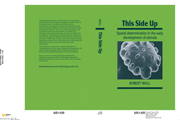Book contents
- Frontmatter
- Contents
- Preface
- Acknowledgements
- 1 Oogenesis
- 2 From oocyte to zygote
- 3 Does cleavage cut up a preformed spatial pattern?: the case of spiralian embryos
- 4 The limits of mosaicism in non-spiralian cleavage
- 5 Cellular interactions in the morula and blastula: the case of sea urchin embryos
- 6 Interactions at morula and blastula in other embryos
- 7 Interactions between moving cells: the case of amphibian gastrula
- 8 Spatial determination in the gastrulae of other groups
- 9 Determination in embryos showing partial cleavage
- 10 Patterns and mechanisms in early spatial determination
- References
- Index
5 - Cellular interactions in the morula and blastula: the case of sea urchin embryos
Published online by Cambridge University Press: 06 October 2009
- Frontmatter
- Contents
- Preface
- Acknowledgements
- 1 Oogenesis
- 2 From oocyte to zygote
- 3 Does cleavage cut up a preformed spatial pattern?: the case of spiralian embryos
- 4 The limits of mosaicism in non-spiralian cleavage
- 5 Cellular interactions in the morula and blastula: the case of sea urchin embryos
- 6 Interactions at morula and blastula in other embryos
- 7 Interactions between moving cells: the case of amphibian gastrula
- 8 Spatial determination in the gastrulae of other groups
- 9 Determination in embryos showing partial cleavage
- 10 Patterns and mechanisms in early spatial determination
- References
- Index
Summary
The early cleavages usually produce a raspberry-like collection of cells known as a morula, and further divisions then produce a form at least derivable from a blastula: a hollow sphere with walls one or a few cell layers thick. This is still a period of no true growth, with the material of the zygote being subdivided amongst cells of more normal sizes. On the other hand, cleavage rates are slowing, allowing more time for transcription and other activities.
The last two chapters have shown that the early cleavages in most animal groups have separated cells with some differences in their biological properties. The next way in which developmental decisions can be made is by interactions among these cells. For instance, if one cell or area produced a labile chemical substance which diffused away from its point of origin, all the rest of the embryo's cells could be defined by their distance from this source and thus determined for various fates. There has been considerable interest in the theoretical requirements of such systems, especially since Wolpert's (1969) and Goodwin & Cohen's (1969) discussions of the subject. In this chapter we will take a classical case of interacting cells, the echinoid morula and blastula, and discuss our knowledge of the interactions at the cellular and biochemical levels.
Normal development and fate maps
Sea urchin embryos provide a good example of the decrease in cleavage rates during the morula and blastula stages (Dan et al., 1980).
- Type
- Chapter
- Information
- This Side UpSpatial Determination in the Early Development of Animals, pp. 144 - 167Publisher: Cambridge University PressPrint publication year: 1990



